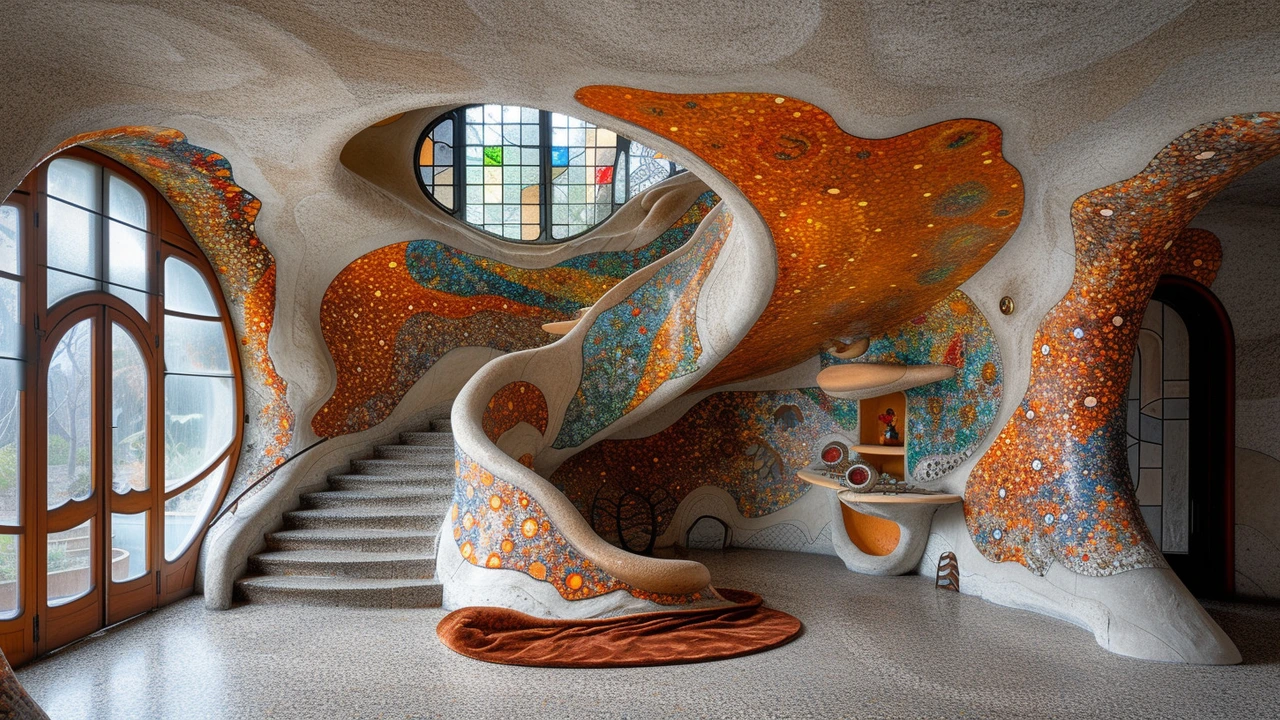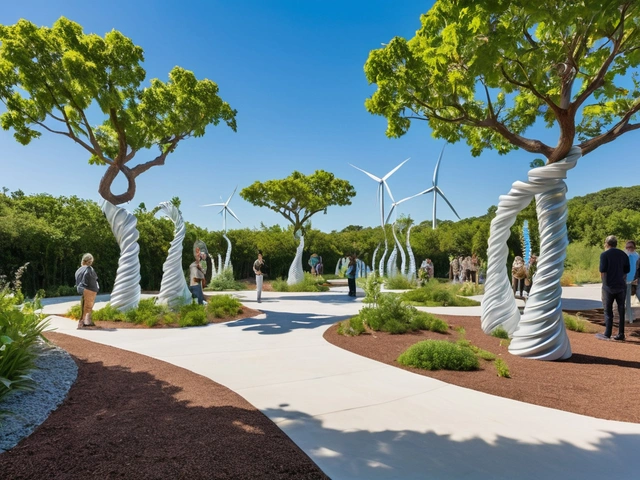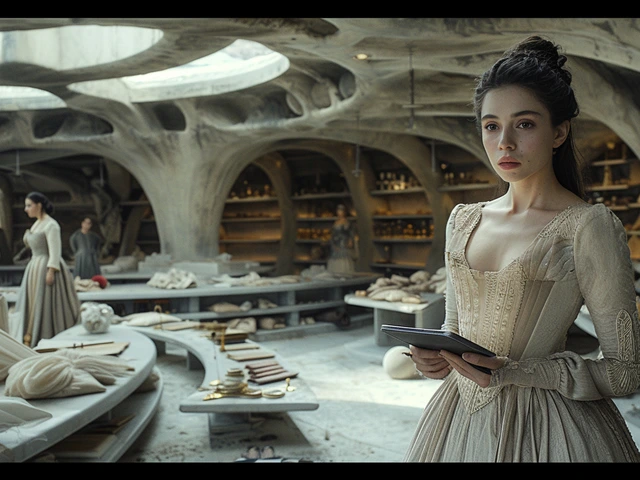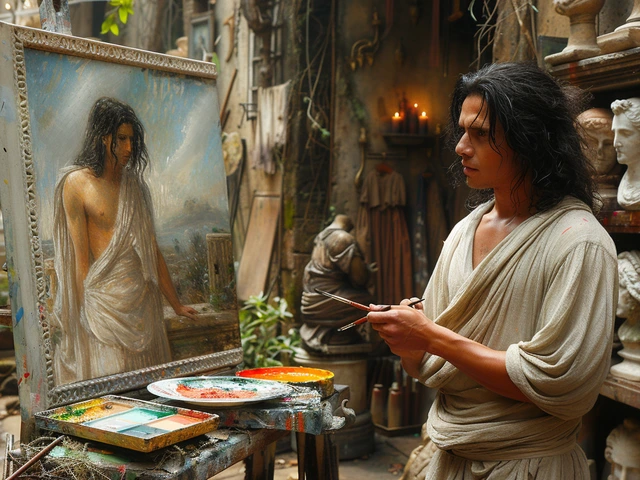The Birth of Art Nouveau
Ah, Art Nouveau, that tantalizingly curvy style that swept through the world like a bohemian revolution at the turn of the 20th century. It wasn't just a blip on the radar of art history; it was a burst of fresh air that infiltrated the grime of the industrial era. Imagine the iron and smoke of the late 1800s clearing away to reveal a world of flowing lines, natural forms, and hypnotic rhythms. Art Nouveau wasn't content to reside quietly in the corners of galleries; no, it burst onto the scene and into the streets, trickling into architecture, furniture, and even the jewelry that people wore. It was as if the world had ordered a makeover from Mother Nature herself, and she delivered with flair and florals.
As someone who has shuffled through enough flea markets and vintage stores looking for that perfect piece of Art Nouveau ephemera, I can attest to its enduring appeal. You see it once, and it seduces you, beckons you to look closer. But what sparked this era of aesthetic innovation? It was a pioneering spirit, a collective yearning to break from rigid Victorian sensibilities and greet the modern age with optimism and organic forms. Artists and architects like Hector Guimard, with his iconic Paris Metro entrances, and Alphonse Mucha, with his delicately sensuous posters, became the rock stars of their times. But more on them later. First, let's delve a bit deeper into the roots and characteristics of Art Nouveau that gave it such verve.
Characteristics of Art Nouveau
Now, describing Art Nouveau can be a bit like trying to catch smoke with your bare hands—it's alluring, slippery, and enchanting all at once. Picture this: sinuous lines that snake and meander without a care, plant-like curves that embrace the structures they adorn, and ethereal women with hair unfurling like vines. It was a style that beckoned the observer to a world of fantasy, a world untethered from the stiff collars of reality. Yet, it was also about function, about bringing beauty into the everyday. The marriage of form and function was like a pas de deux between practicality and pleasure.
Let me get anecdotal here—once upon a time, I stumbled upon a set of Art Nouveau silverware at a quirky little estate sale. The forks and spoons looked like they belonged in the hands of fairies, not humans. They were practical, sure, but they were also a silent rebellion against the mundane. And that's the core characteristic of Art Nouveau—it rebels against the mundane. It was like a visual sonnet, a free verse roaming across everything from a metro station to a teapot. Each piece a silent manifesto declaring, "Life can be beautiful! Every day can be an artwork!"
The Influencers of Art Nouveau
The Art Nouveau movement wasn't created in isolation; it was a love child born from a ménage à trois of cultural influences. The first lover was the Arts and Crafts movement, which cut through Victorian excess like a knife through butter, rejecting mass production and yearning for the human touch in craftsmanship. Then there was the Japanese woodblock print, or ukiyo-e, which slipped into Western hands thanks to trade, leaving behind an intoxicating trail of flat colors, asymmetry, and bold outlines. It was like East met West for a drink, and the West left with a hangover of inspiration. Lastly, let's tip our hats to Symbolism, that cerebral daydream, which whispered to Art Nouveau about the power of metaphor and the allure of the mythical.
These three amorous influences set the stage for Art Nouveau to emerge as a fully-fledged movement, one that would make its own mark on the pages of history. Without these influences, Art Nouveau might have been another staid page in the vast tome of art history, rather than the flamboyant chapter it turned out to be. Speaking of flamboyant, let's talk about the personas who propelled this movement into the limelight.
The Leading Figures of Art Nouveau
Remember when I mentioned rock stars of their times? I wasn't exaggerating. These folks had style, flair, and a touch of drama that could fill a theatre. Let's start with a personal favorite, Alphonse Mucha, the man who made posters into treasures. Mucha's illustrations of languid ladies framed by flora are so iconic, they're basically the face of Art Nouveau. I once tried to mimic his style for a personal art project—let's just say some things are better left to the masters, shall we?
And then there's Antoni Gaudí, the architect who turned Barcelona into a candy land of surreal structures. I mean, have you seen the Casa Batlló? It's like Gaudí threw practicality out of the window and let his imagination run wild, wilder than a child in a chocolate factory. Here in Melbourne, I've seen a thing or two inspired by Gaudí's outlandish creativity—you start to notice when you're crawling through the labyrinth of local galleries and buildings with a penchant for the whimsical.
Art Nouveau Around the World
Now don't go thinking Art Nouveau was some Eurocentric phenomenon; it was a worldly wanderer. From Brussels to Riga, it paraded its opulence, and the world took notice. Amidst the hustle and bustle of New York City's skyscrapers, you can find the tender kiss of Art Nouveau in the form of Tiffany lamps, those luminous jewels that cast a glow of elegance. And let's not forget my own backyard here in Australia, where architects dipped their brushes in the Art Nouveau palette to grace our streets with buildings like the Flinders Street Station, a structure with more curves than a Sunday drive on the Great Ocean Road.
You see, Art Nouveau didn't just take root; it sprouted branches that spread far and wide. Every region added its own local seasoning to the dish. In Spain, they called it Modernisme, and it was as spicy and bold as a flamenco dance. The Italians dubbed it Stile Liberty, as graceful as a gondola on the Venetian canals. The Hungarians answered with Secession, as rich and layered as a dobos torte. The fact that Art Nouveau could wear so many different hats and still be recognized shows its chameleonic charm.
Art Nouveau in Design and Architecture
Picture this: you walk into a room and are greeted by furniture that looks like it's been lifted straight from a fantasy novel. Chairs with backs that arch like stems of flowers, tables with legs that twist like roots reaching for water. That's Art Nouveau in design, taking the stiff backs out of furniture and freeing them to dance in rhythm with nature. It was about creating cocoons of beauty that people could live in, work in, and dream in. And trust me, having once spent an entire paycheck on an Art Nouveau vase—that brief spell of living off instant noodles was worth it for the daily dose of beauty.
But what's design without architecture? Nothing, I tell ya! The facades of Art Nouveau buildings are like the faces of enchanting strangers—beguiling, inviting, and full of stories. I remember walking past the Royal Exhibition Building here in Melbourne, and I couldn't help but gawk at its grandeur, its nod to historical styles, and that dome, oh that dome! It's like a scoop of vanilla ice cream sitting atop a very fancy cake. Architecture in the Art Nouveau era wasn't just about building; it was about dreaming in bricks and mortar, about creating symphonies you could walk through.
The Legacy of Art Nouveau
It's been over a century since Art Nouveau reached its peak, and you’d think it would've retreated quietly into the annals of time. But no, Art Nouveau is the guest that never leaves the party, the tune that hums in the back of our collective consciousness. It might no longer be the enfant terrible it once was, but its influence lingers in the Art Deco that followed, in the organic forms of modern design, and in the hearts of romantic idealists like me.
As old buildings get facelifts and design trends come and go, Art Nouveau remains a poignant reminder that there was, and always will be, a place for beauty in our lives. It reminds us that the machine age doesn't have to be cold and impersonal—that art can, and should, intertwine with life. Maybe that's why people still chase after original Art Nouveau pieces with the fervor of a treasure hunter. Maybe that’s why I sit here, typing away, surrounded by my collected trinkets of a bygone era, feeling like I'm part of a secret society that appreciates the gentle power of a curve.
Wrapping Up the Nouveau
Art Nouveau was more than just an art movement; it was a philosophical whisper that blossomed into a shout. It wasn't just about making things pretty; it was about making pretty things matter. And let's be honest, in a world where we're inundated with all sorts of sights and sounds, isn't it quite something to have a thing of beauty capture our attention, even if just for a second? That, my friends, is the enduring charm of Art Nouveau. It's invaded our visual language, taught us the value of integrating creativity into our daily lives, and left us, well, basically better dressed.
As I sign off from this little foray into the world of Art Nouveau, I encourage you to open your eyes to the remnants of this era that might be hiding in plain sight around you. Maybe it's a building you pass on your way to work, maybe it's a piece of jewelry in your family's heirloom box, or maybe it's the tendrils of your own creativity waiting to unfurl. Keep the spirit of Art Nouveau alive in your own way. I know I will, even if it means saving up for my next Nouveau objet d'art instead of that practical new fridge. Priorities, people, priorities!




